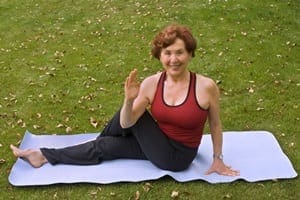statFor some women, it's about making an elegantement at special events or being a couple…

Balance, Reflexes and Senior Health
 It’s sad but true: As we get older, our balance tends to deteriorate and our reflexes tend to slow. When you’re aware that it’s happening, it can be very frustrating. But when you’re not aware of these gradual changes, they can actually be dangerous as well. This is especially true as you exit middle age.
It’s sad but true: As we get older, our balance tends to deteriorate and our reflexes tend to slow. When you’re aware that it’s happening, it can be very frustrating. But when you’re not aware of these gradual changes, they can actually be dangerous as well. This is especially true as you exit middle age.
Part of the reason it’s so frustrating to experience a decline in balance and reflexes is that—many times—it feels like there’s not very much we can do about it. And to a certain extent, decline really is almost inevitable. However, there is some good news. Even for middle-aged adults and seniors, there are numerous ways we can help maintain or even improve our sense of balance.
The Relationship Between Balance, Reflexes, and Overall Well-Being
By the time we’re in our late 50s or early 60s, many of us will begin to have episodes where we feel dizzy or unsteady, or as if our surroundings are in motion. These feelings are triggered by gradual deterioration in the three major systems that work together to provide our balance and coordination— the visual system, the vestibular (inner ear) system, and the proprioceptive system (the sense of body position in space). A loss of balance makes falling more likely. And since our reflexes are also slowing, it becomes less likely that we will be able to catch ourselves if and when we do fall. According to the U.S. Centers for Disease Control and Prevention (CDC), roughly one-third of adults age 65 years and older fall each year. And among older adults, falls are actually the leading cause of injury-related deaths.
But even when they’re not fatal, falls can have serious consequences for an older person’s health and lifestyle. Falls can cause injuries that limit activity or make it more difficult to live independently while recovering. And when recovery is slow or incomplete, a lack of mobility can sometimes result in social isolation and depression. In some circumstances, the psychological effects may be more long-lasting than the physical ones. Fear of another fall and a loss of confidence can discourage seniors from returning to an active life—which actually tends to make balance and reflexes deteriorate faster. Unless something happens to change things, this can be the beginning of a downward spiral.
What Can Be Done?
Chiropractic physicians are specially trained to diagnose and treat conditions related to the musculoskeletal and nervous systems, and have a deep understanding of how these systems change as we age. We can work with you to develop a personalized plan to improve your overall musculoskeletal and nervous system health, including strength, range of motion, stamina, balance, coordination and speed.
Regular chiropractic care and massage therapy can be particularly useful in maintaining flexibility, improving circulation and increasing muscle tone. Recent studies have identified strong links between the lifestyle habits we practice in young adulthood and middle age and overall health and wellness during our senior years. With this mind, a chiropractor can recommend specific nutritional and exercise strategies that can help in these key areas:
- Building healthy bone and muscle mass as the foundation for an active lifestyle.
- Stimulating and reinforcing neural pathways associated with activities requiring good balance and quick reflexes.
- Achieving a healthy weight that reduces unnecessary wear-and-tear on joints.
- Maintaining good overall cardiovascular fitness.
Exercises to Improve Balance and Reflexes
Fortunately, there is a wide variety of exercises, both physical and mental, that will help improve balance and reflexes. And most of them don’t even require a gym membership or any expensive equipment! Here are just a few to consider:
- Jogging in the woods, where your body will need to react quickly to stimuli in the form of obstacles and uneven terrain. The more often you run in the forest, the quicker your reflexes will get.
- Bouncing a rubber ball on the floor, throwing it against a wall, or having a catch with a partner. These activities will all improve anticipation, reaction time, hand-eye coordination and lateral movement.
- Kicking a soccer ball back and forth with a partner or against a wall. Moving to the ball builds coordination while stopping it and striking it with either foot requires balance. The more quickly you pass the ball back and forth, the more your reflexes will improve over time.
- Practicing an appropriate form of yoga or tai chi can provide a wide range of health benefits, including improved balance and coordination.
- Playing some types of video games—especially those with motion controllers—can help improve reflexes as well as peripheral vision.
Remember—use common sense when choosing your activities. Be sure to ask your chiropractor for advice if you have any specific health conditions or if it’s been a while since you participated in any kind of strenuous physical activity.
Maintaining your musculoskeletal and nervous system health is one key to enjoying an active lifestyle at every stage of life. We can design a program that will help you do that safely. Call or visit our office to learn more!




